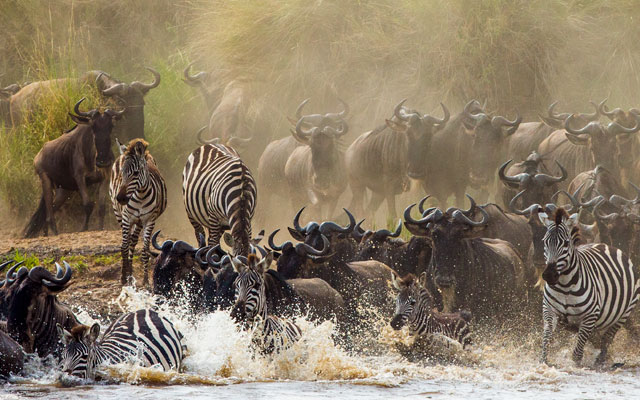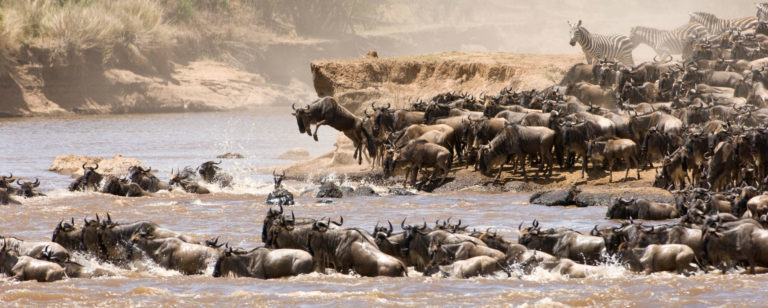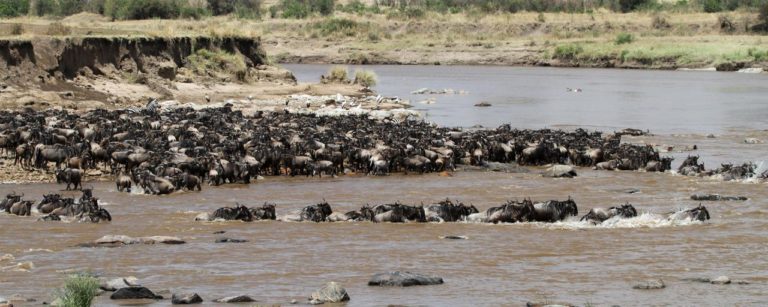 The annual migration of giant herds of grazers across Northern Tanzania and Kenya is a truly specular event. Over two million wildebeest, zebras and gazelles move through the Serengeti and Masai Mara ecosystems in search of green pasture in a regular pattern. This is surely one of the greatest wonders of the natural world. The wildebeest migrate around Serengeti into the Maasai Mara for the sole purpose of following the rainfall. For their calving from December to March they always begin their cycle in southern Serengeti Ndutu area and follow wherever the grass is greener. Whilst we have a good idea of where the wildebeest should be at any given time of year it realy does depend on where the rain falls.
The annual migration of giant herds of grazers across Northern Tanzania and Kenya is a truly specular event. Over two million wildebeest, zebras and gazelles move through the Serengeti and Masai Mara ecosystems in search of green pasture in a regular pattern. This is surely one of the greatest wonders of the natural world. The wildebeest migrate around Serengeti into the Maasai Mara for the sole purpose of following the rainfall. For their calving from December to March they always begin their cycle in southern Serengeti Ndutu area and follow wherever the grass is greener. Whilst we have a good idea of where the wildebeest should be at any given time of year it realy does depend on where the rain falls.
Generally there are two main events of the Serengeti migration when the herds are the most concentrated.
July-October; this is when the wildebeest are in the Northern Serengeti plains and you have a chance of seeing up to thousands crossing the great Mara river.
December-march; at this time the wildebeest are in the southern Ndutu plains of the Serengeti and its calving season. It’s a fabulous time to see the herds on the dramatic sweeping plains of the south.
April-May; the wildebeest migration moves north into the plains of the Southern Serengeti with front runners stretching out to the western corridor and centre of the park at Seronera. Asilia dunia camp is a great option so at this time as are any of central Serengeti hotels such as the serena or sopa. Early herds may well have pushed up to the grumeti river camp,Kirawira and mbalageti lodge area of the western corridor.





